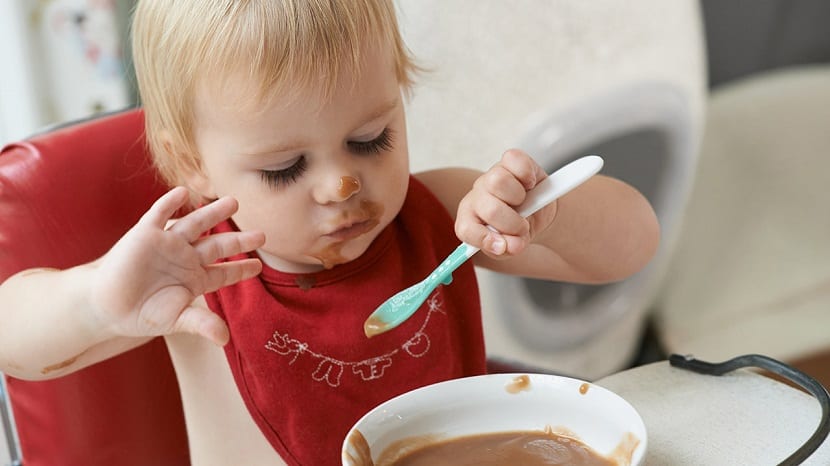
Children's learning, it is not based solely on acquiring knowledge or memorizing concepts and general culture. Children have to learn and acquire skills such as walking, running, jumping, chewing food in different textures, among many other lessons. All these activities that are carried out automatically on a daily basis are not innate.
So it is necessary to learn and work in childhood everything that makes us self-sufficient people, autonomous and independent. One of the skills that children have to work on in their earliest childhood is to learn to eat on their own. Specifying a little more, in particular they must learn to use the utensils with which to eat, since most children start eating with their hands and that, it can already be said that it is eating alone.
At what age should children learn to eat alone?
Every child is different and all these skills are directly associated with the level of maturity of the child. So it is very important not to compare, or to think that your child is more behind than others because they have not acquired the same skills. It is essential to respect the times of each child, and for this, you will have to arm yourself with patience and accept that this, like other processes, will surely be slow.
Your child may show an interest in utensilsHe will surely imitate you and put a glass in his mouth or he will want to use the fork by himself. When this moment arrives, you must allow it to do so even if it can get stained, so it will gradually acquire autonomy.
However, it is not necessary to wait for your child to show interest in eating alone. You may get started with a few simple steps.
The first step: knowing the utensils and playing with them

The normal thing is that younger children see the silverware and want to play with them, bite them or hit the table. This step is completely normal, especially in children under 2 years of age. Between 2 and 3 years, is when they begin to have the necessary coordination to take the spoon to their mouth with a logical sense.
It is important that you allow him to play with the tools and that also, teach him the name of each utensil. This way you will also work on understanding and language skills.
The second step: learn to use the spoon
You must first teach him to use the spoon, make sure it is small and of a lightly heavy material. To start, you can offer a consistent food such as yogurt, so that it can be eaten easily and it is easier for the product to reach the mouth.
Later, they will learn to use the fork
The fork is a bit more difficult, since they have to use force so that the food is punctured in the utensil. Therefore, it is preferable to start with the spoon and leave the fork for when the first step is more worked. It is also important to teach the child to differentiate which foods are eaten with a spoon and which are eaten with a fork.
Learn to use the glass

Going from the bottle to the glass is not an easy task, therefore, you can use special glasses for babies, the kind that have a lid and a spout to drink from. So the child can learn to hold the glass, it will go gaining strength while getting used to the glass and the transition to the traditional glass will be easier. However, your child is more than likely to pick up a glass from the table and put it in his mouth.
This is very normal since imitation is their main source of learning. You can place plastic cups on the table with water, so if you drop the glass or tip over the contents, you will not be in danger of hurting yourself or yourself.
In the food, zero distractions
It is very important that children get used to eating without distractions, so there should be no television, or electronic elements that can mislead the little one from his task. Thus, the child will focus on what he is doing and will have greater capacity for concentration.